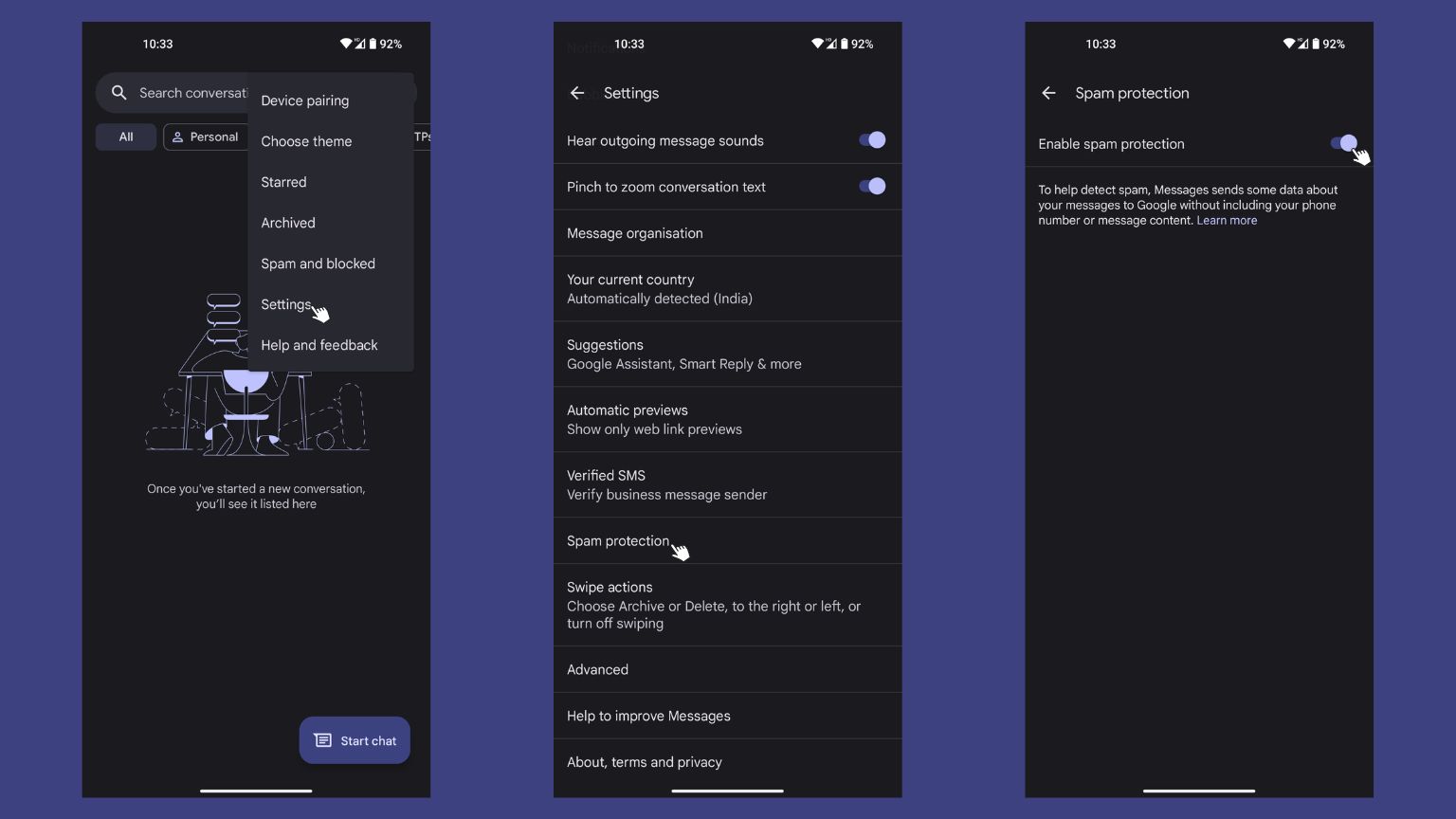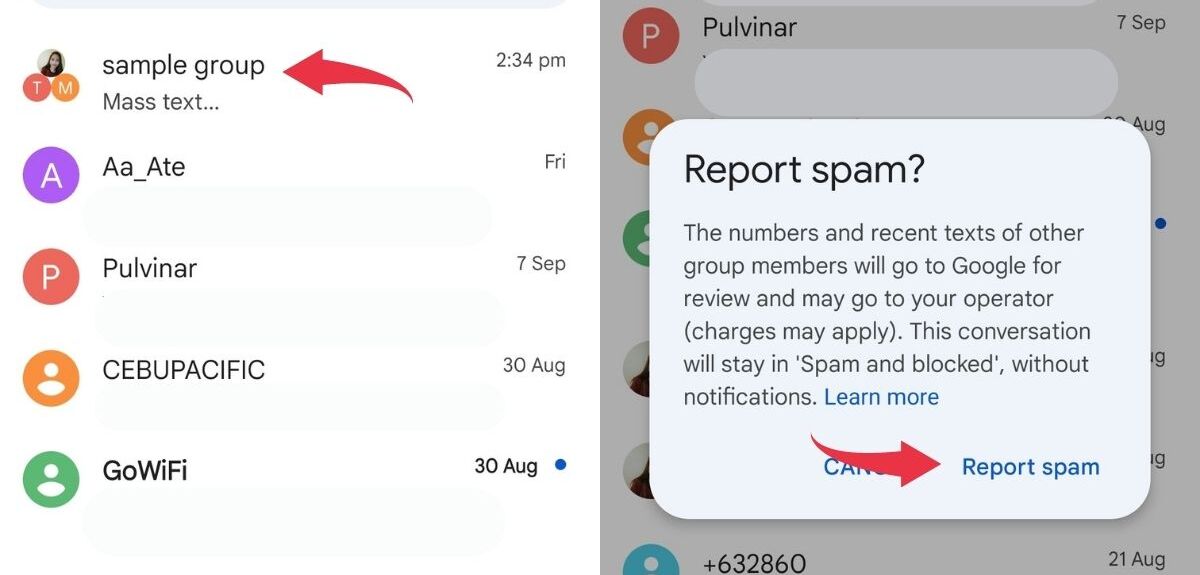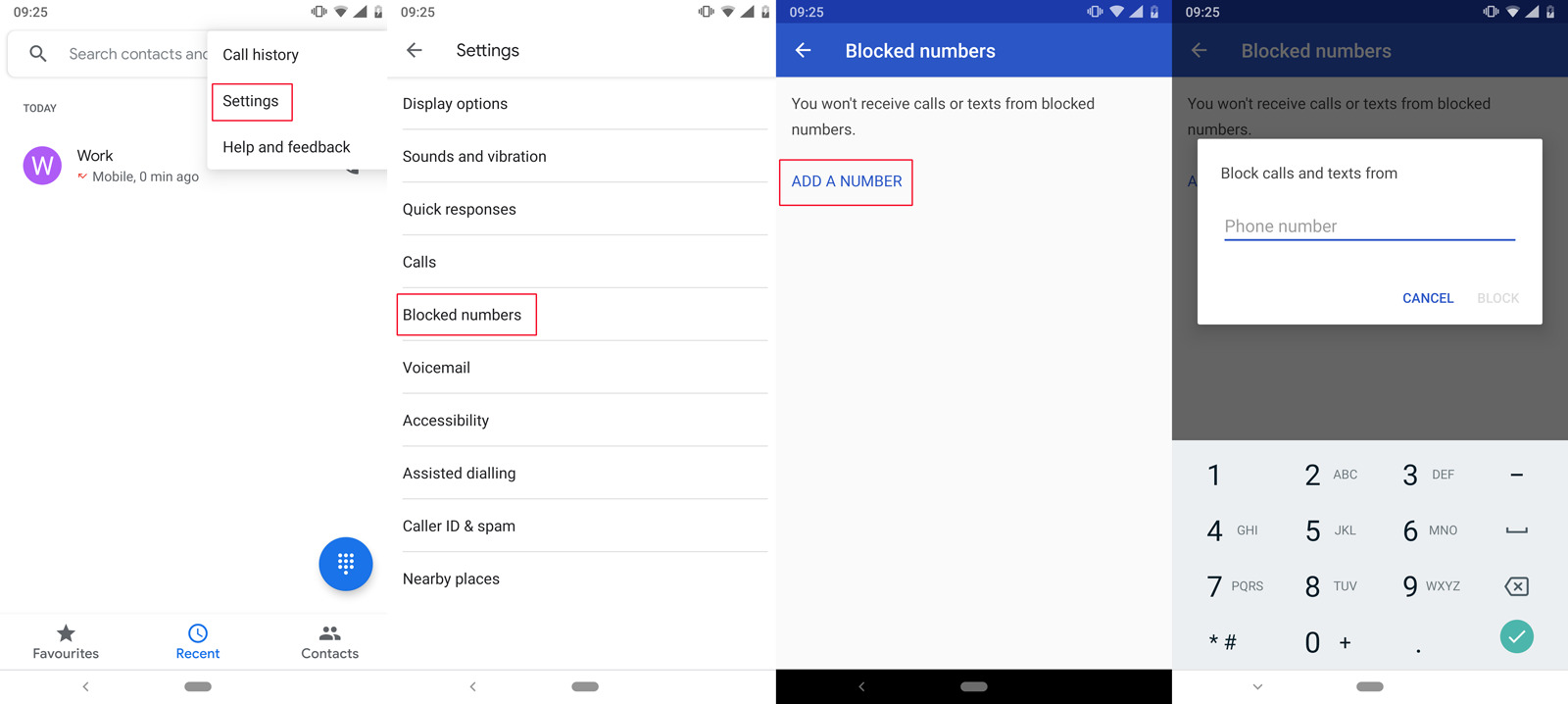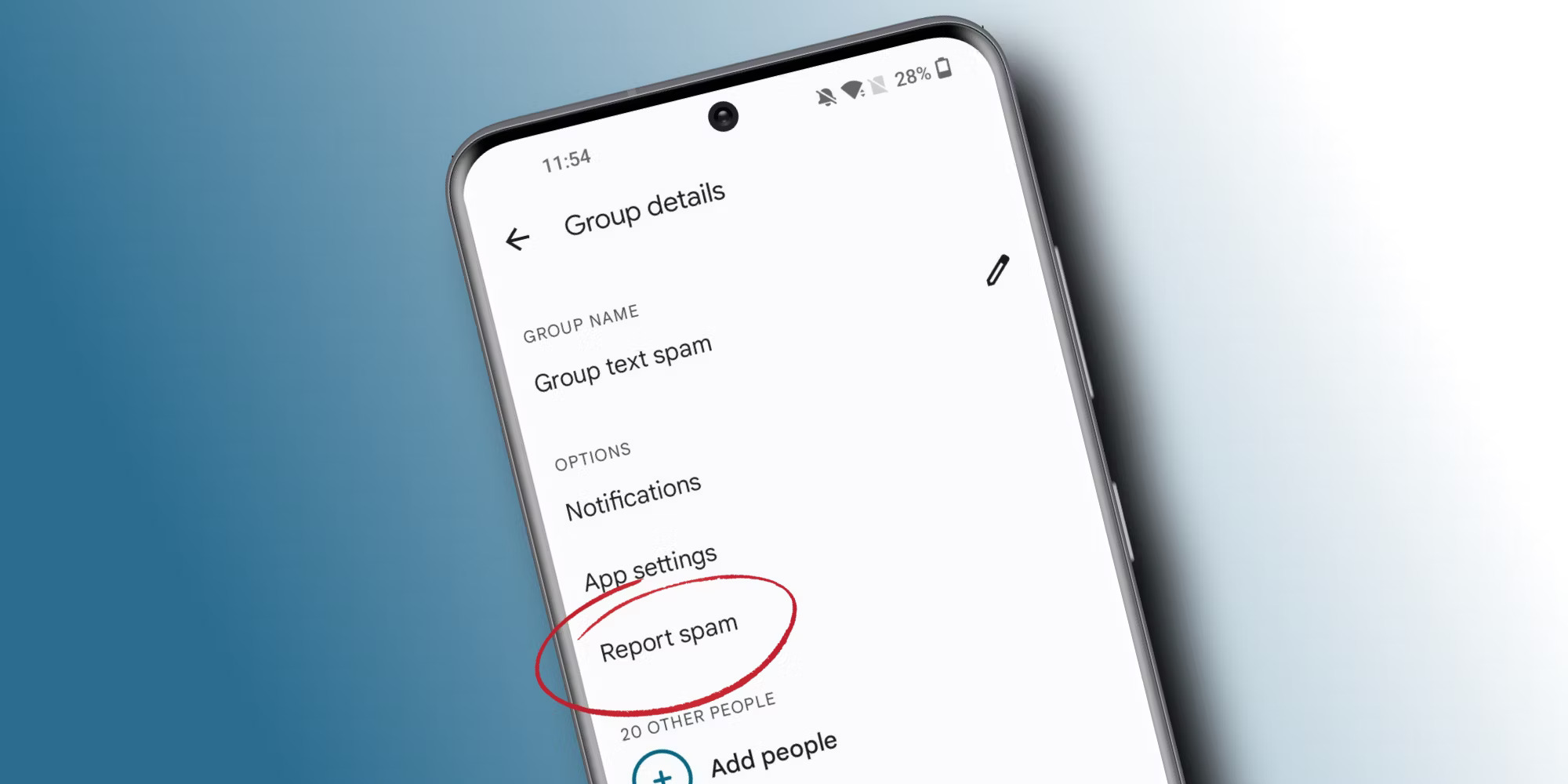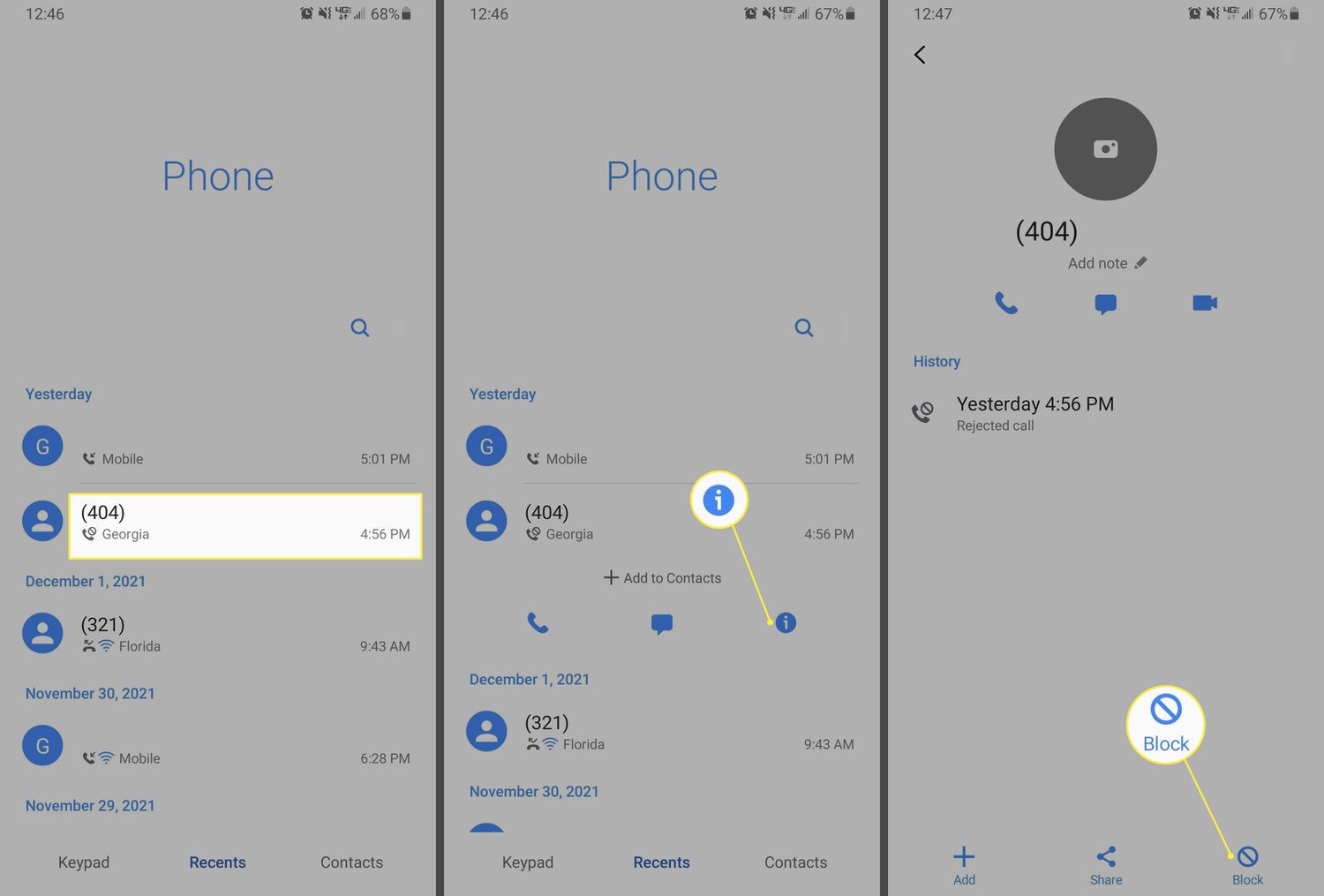Introduction
Spam texts have become an unfortunate nuisance for many Android users. We all know how frustrating it is to constantly receive unwanted and unsolicited text messages advertising various products or services. Not only do these spam texts clutter our inbox, but they also pose risks to our privacy and security. Fortunately, there are effective methods to combat these annoying messages and regain control over our messaging experience.
In this article, we will explore the issue of spam texts on Android devices and provide practical solutions to block them effectively. Whether you’re tired of receiving promotional offers you never signed up for or concerned about potential scams lurking in your inbox, we’ve got you covered. From identifying spam texts to leveraging native Android features and third-party apps, we will walk you through the steps to take back control of your messaging app.
Before we dive into the methods of blocking spam texts, it’s important to understand why they are a problem in the first place. Spam texts not only waste our time and clutter our inbox, but they can also lead to potential privacy breaches and even financial losses if we fall victim to scams. By gathering personal information or tricking us into sharing sensitive data, scammers can target us for identity theft or fraud. It is crucial to take proactive measures to protect ourselves from these risks.
Why Spam Texts are a Problem
Spam texts have become a pervasive problem as more and more people rely on their smartphones for communication. These unwanted messages not only inconvenience us but can also have serious implications for our privacy and security. Let’s take a closer look at why spam texts are a problem:
1. Invasion of Privacy: Spam texts invade our personal space, intruding upon the privacy of our messaging apps. They disrupt our communication by flooding our inbox with unsolicited messages, making it difficult to find important and legitimate texts.
2. Waste of Time and Resources: Sorting through and deleting spam texts can be a time-consuming and frustrating task. Our valuable time and smartphone resources are wasted on dealing with these unwanted messages, ultimately causing a decline in productivity.
3. Risk of Scams and Fraud: Some spam texts are more than just annoying; they can be vehicles for scams and fraud. These texts often try to trick us into revealing personal information such as login credentials or financial details. Falling victim to such scams can have severe financial and personal consequences.
4. Malware and Viruses: Spam texts can also be carriers of malware and viruses. Clicking on links or downloading attachments from these messages can compromise the security of our device, leading to data breaches and other cybersecurity issues.
5. Disruption of Communication: With spam texts flooding our inbox, it becomes challenging to stay connected with important contacts. Legitimate messages from friends, family, or work-related sources can easily be buried under the sheer volume of spam texts, leading to missed or delayed communication.
Overall, spam texts pose significant risks and inconveniences for Android users. It is essential to take steps to combat this issue and protect our privacy, security, and overall messaging experience. In the following sections, we will explore various methods and tools that can help us block spam texts effectively.
How to Identify Spam Texts
Identifying spam texts is the first step in effectively blocking them. While some spam texts are obvious, others may be more subtle and difficult to distinguish from legitimate messages. Here are some tips to help you identify spam texts on your Android device:
1. Unfamiliar Numbers: If you receive a text from an unknown sender or an unfamiliar number, exercise caution. Legitimate businesses or contacts usually identify themselves, so a text from an unrecognized number could be a potential spam message.
2. Grammatical Errors and Poor Formatting: Pay attention to the content of the text message. Spelling mistakes, grammatical errors, and poor formatting are common indicators of spam. Legitimate companies typically proofread their communications, so sloppy language and formatting could be a red flag.
3. Suspicious URLs: Be wary of text messages that include suspicious URLs. Cybercriminals often use phishing techniques to trick individuals into clicking on malicious links that can lead to scams or malware infections. Avoid clicking on any links unless you are absolutely certain of their legitimacy.
4. Overly Generous Offers or Promotions: If a text message promises unbelievable discounts, prizes, or exclusive offers, it’s likely a spam message. Scammers often use enticing offers to lure victims into their traps. Exercise skepticism, especially if the offer seems too good to be true.
5. Requests for Personal or Financial Information: Legitimate organizations will never ask for personal information, such as social security numbers or banking details, via text message. If a text asks for sensitive information, treat it as a potential scam and refrain from providing any personal or financial data.
6. Excessive Urgency or Pressure: Spam texts often use language that creates a sense of urgency or pressure to act quickly. Be cautious of messages that demand immediate action or threaten negative consequences if you don’t comply. Legitimate businesses typically provide clear and reasonable instructions without employing such tactics.
By being vigilant and paying attention to these indicators, you can improve your ability to identify spam texts and protect yourself from potential scams or privacy breaches. In the next sections, we will explore how to block spam texts using both native Android features and third-party apps.
Native Android Messaging App: Blocking Spam Texts
One of the simplest ways to block spam texts on your Android device is by utilizing the native messaging app’s built-in blocking features. Here’s how you can do it:
1. Open Your Messaging App: Launch the default messaging app on your Android device. This is usually labeled as Messages or Messaging.
2. Identify the Spam Message: Locate the spam text that you want to block from your inbox.
3. Long-Press the Message: Press and hold on the spam text until a menu appears.
4. Select Block Number: In the menu, look for an option that says Block Number or similar. Tap on it to block the sender of the spam text.
5. Confirm the Block: A confirmation message may appear asking if you want to block the number. Confirm by selecting Yes or Block.
By following these steps, you can block the sender of the spam text using the native Android messaging app. Once blocked, future text messages from the same sender will no longer appear in your inbox.
It is worth noting that the exact steps to block a number may vary slightly depending on the version of Android and the specific messaging app you are using. If you cannot find the blocking feature in your native messaging app, consult the app’s documentation or search online for instructions tailored to your device and messaging app.
While this method can effectively block spam texts from known numbers, it may not be as effective in blocking texts from unknown or random numbers. In such cases, it is advisable to explore third-party apps specifically designed for spam protection and call blocking.
In the next section, we will discuss some popular third-party apps that offer enhanced spam protection and blocking capabilities to help further mitigate the issue of spam texts on your Android device.
Third-Party Apps: Blocking Spam Texts
If you find yourself receiving a large volume of spam texts or if the native messaging app’s blocking feature is not sufficient, you may want to consider using third-party apps specifically designed to block spam texts on Android. These apps offer additional features and customization options to enhance your spam protection. Here are some popular options to consider:
1. Truecaller: Truecaller is a powerful and widely-used app that not only blocks spam calls but also filters out spam texts. It uses a vast database to identify and block spam texts, ensuring a cleaner and safer messaging experience.
2. Hiya: Hiya is another reliable app for blocking spam texts. It not only identifies and blocks spam messages but also offers features like call blocking, reverse phone number lookup, and more.
3. RoboKiller: RoboKiller is known for its effective spam call blocking, but it also offers spam text filtering. It uses machine learning algorithms and crowdsourced data to identify and automatically block spam texts from reaching your inbox.
4. SMS Organizer: SMS Organizer is a feature-rich SMS app developed by Microsoft. Along with organizing your messages, it also offers spam protection. The app automatically categorizes and blocks spam texts, ensuring that you only receive important and legitimate messages.
5. Google Messages: Google Messages, the default messaging app on many Android devices, has also started offering spam protection features. It can identify and filter spam texts, helping you keep your inbox clean and free from unwanted messages.
These are just a few examples of the many third-party apps available in the Google Play Store that can help you block spam texts on your Android device. Each app comes with its own set of features and customization options, so take the time to explore and find the one that best suits your needs.
In addition to blocking spam texts, some of these apps may provide additional functionality such as call blocking, message backup, or even advanced privacy features. Consider the features that are important to you, along with user reviews and ratings, when choosing a third-party app for spam protection.
Now that we have explored both native Android messaging app features and third-party apps for blocking spam texts, the next section will cover how to report spam texts to relevant authorities.
How to Report Spam Texts
Reporting spam texts is an essential step in combating the issue of unsolicited messages and protecting others from falling victim to scams. By reporting spam texts, you contribute to the collective effort of authorities, network providers, and other users in identifying and taking action against spammers. Here’s how you can report spam texts on your Android device:
1. Take a Screenshot: Capture a screenshot of the spam text message. This will serve as evidence when reporting the message.
2. Forward the Text: Open the spam text message and forward it to your wireless carrier’s spam reporting service. To do this, tap on the message, then look for the forward arrow icon and select it. Enter the carrier’s designated spam reporting number and send the message.
3. Use Reporting Apps: Some carriers and third-party spam protection apps offer dedicated reporting features. Check if your carrier or the spam app you’re using has an option to report spam texts directly through their app.
4. Internet Crime Complaint Center (IC3): If the spam text involves a scam or fraudulent activity, you can report it to the Internet Crime Complaint Center (IC3). Visit their website and fill out their online complaint form with as much detail as possible.
5. Federal Trade Commission (FTC): The Federal Trade Commission (FTC) also accepts reports on spam texts. Visit their website or call their toll-free number to file a complaint. Provide them with relevant information about the spam text, such as the sender’s number, message content, and any additional details.
Remember, reporting spam texts helps in the fight against spam and protects others from falling victim to scams. While reporting may not immediately stop the spam, it contributes to raising awareness and assists authorities in further investigations and actions against spammers.
By taking the time to report spam texts, you are not only protecting yourself but also contributing to the ongoing effort to create a safer messaging environment for all Android users.
In the next section, we will provide some tips to help you proactively prevent spam texts from reaching your device.
Tips to Prevent Spam Texts
While blocking and reporting spam texts are essential steps, it’s always better to prevent them from reaching your device in the first place. Here are some tips to help you proactively prevent spam texts on your Android device:
1. Be Cautious with Sharing Your Number: Be mindful of where you share your phone number. Avoid entering it on unreliable websites or providing it to unknown individuals or organizations.
2. Read Privacy Policies: Before providing your phone number to any company or subscribing to a service, read their privacy policy carefully. Make sure they have measures in place to protect your information and prevent spam messages.
3. Don’t Respond to Spam Texts: Responding to spam texts, even to opt-out, might confirm to the sender that your number is valid and actively monitored. Ignore and delete spam texts without engaging.
4. Keep Your Apps and Operating System Up to Date: Regularly update your apps and Android operating system. Updates often include security enhancements that can help protect against spam and other threats.
5. Use Anti-Spam Apps: Consider installing reputable anti-spam apps from the Google Play Store. These apps can help detect and block spam texts before they reach your inbox.
6. Enable Spam Filters: Check if your messaging app has built-in spam filters or blocking features. Enable these filters to automatically identify and block suspected spam texts.
7. Beware of Untrusted Links: Avoid clicking on links from unknown or suspicious sources. Links in spam texts can lead to phishing websites or malware. Exercise caution and verify the authenticity before clicking on any links.
8. Manage Contact Permissions: Regularly review the permissions granted to messaging apps and ensure they have access only to necessary contacts. Restricting app permissions can help prevent unwanted messages from unknown contacts.
9. Use Do Not Disturb Mode: Consider enabling the Do Not Disturb mode during certain periods, such as at night or when you don’t want to be disturbed. This can help reduce the annoyance of spam texts.
By following these tips, you can significantly decrease the likelihood of receiving spam texts on your Android device. Remember, prevention is key, and being proactive can save you time and frustration in dealing with unwanted messages.
In the next section, we will provide a brief summary of the strategies discussed in this article and conclude with the importance of implementing these steps to combat spam texts effectively.
Conclusion
Spam texts on Android devices can be a major annoyance, invading our privacy, wasting our time, and even posing risks to our security. Fortunately, there are effective ways to block and minimize the impact of spam texts on our messaging experience.
In this article, we discussed various methods to combat spam texts. We explored how to identify spam texts by looking out for unfamiliar numbers, poor formatting, suspicious URLs, and other indicators. We also discussed how to block spam texts using the native Android messaging app’s built-in blocking features, as well as the option of using third-party apps specifically designed for spam protection.
Furthermore, we highlighted the importance of reporting spam texts to relevant authorities, such as your wireless carrier, Internet Crime Complaint Center (IC3), and the Federal Trade Commission (FTC). Reporting spam texts helps in the efforts to combat spam and protect others from falling victim to scams and fraudulent activities.
We also provided tips to proactively prevent spam texts, such as being cautious with sharing your number, reading privacy policies, keeping your apps and operating system up to date, and using anti-spam apps and filters.
By implementing these strategies, you can regain control over your messaging app and enjoy a cleaner and safer messaging experience. Remember to stay vigilant, exercise caution when sharing personal information, and regularly review and update your spam prevention measures.
Together, we can create a spam-free environment and protect ourselves and others from the nuisance and potential harm caused by spam texts.







